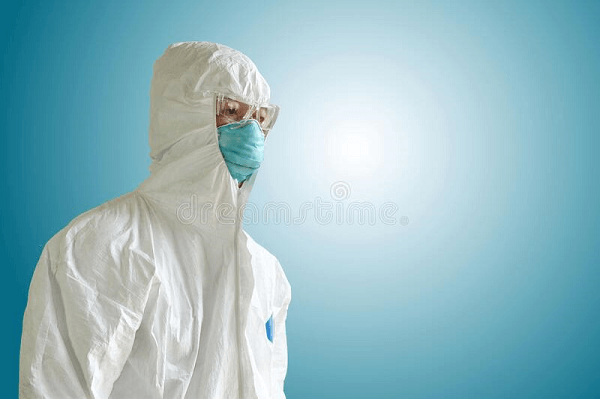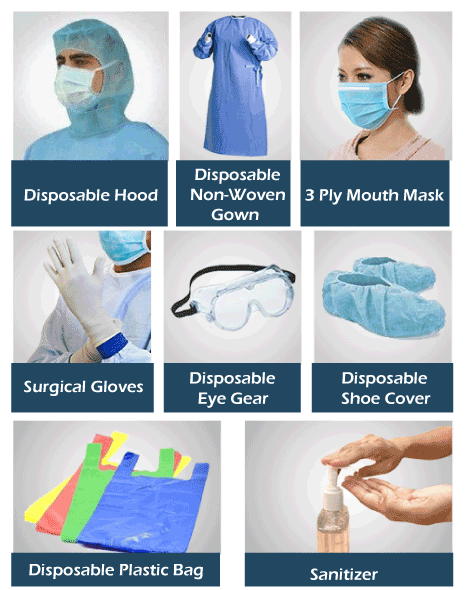What is the full form of PPEPPE: Personal Protective EquipmentPPE stands for Personal protective equipment. It refers to all the protective clothing, face shields, gloves, helmets, goggles, facemasks and other respirators or equipment designed to protect the individuals or wearer from any injury, illness and infections. The type of hazardous activities addressed by PPE includes physical, chemical, biological, electrical, heat, biohazard, and airborne events. 
PPE is not only worn for the protection of any job-related & occupational safety but also for various types of recreational activities. The main purpose of any personal protective equipment is to reduce or decrease the effect of any hazardous exposure to the wearer. PPE is more effective when engineering or administrative controls cannot control or reduce hazardous risk to a feasible level. But PPE cannot eliminate the effect of hazardous events; sometimes, it exposes the wearer to the hazard if the equipment fails. Sometimes it creates a barrier between the working atmosphere/environment and the wearer & user. It constructs an additional burden on the wearer by creating discomfort create difficulties in carrying out the work efficiently. And any of these discomforts lead to improper wearing of personal protective equipment, and this improper wearing increases the chances of getting an infection and puts the wearer at a higher risk of injury and even sometimes leads to death also. Practicing of PPEVarious occupational safety methods and proper use of hazard controls such as personal protective equipment, fire alarms etc., help to mitigate workplace hazards that threaten workers' lives. Good and proper design helps to minimise barriers between the wearer and the working environment, and through that, it ensures the safety of the wearer and creates healthy working conditions. Any working environment has to rank hazards according to their risk, and the hierarchy of hazard controls provides a policy framework for the working environment, which ranks the types of hazard controls in terms of their absolute risk reduction. And while ranking at the top of the hierarchy is elimination which removes the hazard entirely, second is substitution which replaces the hazard with a safer alternative. If we cannot apply these elimination or substitution measures, we should implement engineering and administrative controls. And Personal protective equipment ranks last on the hierarchy of controls because the workers are regularly exposed to the hazard without a barrier of protection. Still, it doesn't mean their usefulness is less than other control methods. Classification of Personal Protective EquipmentPersonal protective equipment can be classified based on the part of the body it protects, the types of hazards it covers, or the type of accessories or garments it is made up of. We can use a single type of item the protection against multiple types of problems. We must compare the protective quality of each pair of protective equipment with the type and quantity of hazards expected to be found in the workplace. 
1. RespiratorRespirators are the type of Personal protective equipment used to protect the user from the contaminated atmosphere and breathing of contaminated air and thus preserve the respiratory organs of the wearer from damage. There are various respirators, but the most commonly used respirator is for filtering out the chemicals, airborne droplets or particles, and gases from the air inhaled by the wearer. The filtration can be active or passive. For example, the mask used during COVID, such as N95, and various gas masks, are examples of this type. And the second type of respirator protects users by providing safe, clean, clear and respirable air from another artificial source. An example of this type includes airline respirators. Requirements for respirators are mostly felt when the working place does not have proper ventilation, and other engineering methods are inadequate to provide clean and breathable air. Providing breathable air protects the respiratory tract of the wearer, thus preserving health. The surgical mask used in hospitals are the type of PPE but are not classified as respirators because they cannot fully protect individuals from contaminated air particles and airborne infections. It means that all type of wearer is not good respirators because they allow entry of various harmful substances which adversely affect the individual health. So respirators that protect the individual from any contaminates are considered good respirators. 2. Personal Protective Equipment for Skin ProtectionVarious skin diseases such as acne, blister, dermatitis, skin cancer, skin injuries and infections are the most common types of occupational skin diseases, and their treatment is very costly. Hazards in the working environment lead to various types of occupational skin diseases, and they are categorised into different groups such as chemically Induced skin diseases, workers come into contact with various types of harmful chemicals which affect the skin of the worker and their health also. These chemicals come into contact with the workers when working in the chemically contaminated workplace through direct contact, sometimes inhaling harmful aerosols or splashes. Sometimes, Various types of physical factors such as high temperature, harmful Ultraviolet and solar radiation, extreme rainfall, etc., lead to skin disorders which damage the skin when the skin is exposed to these physical factors for a longer duration. Some biological agents, such as harmful bacteria, parasites, fungi, microorganisms, plants, and animals, can have a very harmful effect on the skin when the skin is exposed to these agents for longer. Mechanical pressure also creates skin problems by putting extra pressure on the skin through friction, discolourations etc. For the protection of skin through these types of diseases, personal protective equipment is vital. Any personal protective equipment used to protect and act as a filter between the skin and the damaging skin agent is considered skin protection equipment. Most of the work is done with the help of the hand, so the priority is to protect the hand, and by protecting the hand, we protect our full body. So here come gloves for skin protection, and various types of gloves are used as personal protective equipment. Some of them are rubber gloves, heat-resistant gloves, fire-resistant gloves etc. Even in sports and recreational activities, gloves protect the hand and other body parts from mechanical pressure. Also, items other than gloves, such as clothing worn to protect the skin from damage, come under personal protective equipment. For instance, a coat worn to protect the skin from harmful chemicals and face shields used to protect the face and eyes from the splash of hazardous chemicals come under personal protective equipment. 3. Personal Protective Equipment for Eye ProtectionThe eye is one of the most important parts of the human body, from which one can see and identify objects, places, people etc. But these days, eye injuries and vision loss are the most common eye problems. Injuries to the eyes can happen through various means, but most injuries happen when solid particles of dust, sand, cement metal, silvers, wood etc. enter the eye. Some smaller size particles present in the smoke and fog can cause eye injuries. Also, excessive force or pressure over the eyes causes eye injuries. Chemically active agents, biological agents, thermal agents, and ultraviolet rays also cause eye problems. Protection of the eyes varies on the types of work, and the safety provided varies. Some jobs require more protection, such as welding some require less protection. And here comes the use of personal protective equipment to protect eyes externally and internally. Some equipment used in eye protection are goggles which provide safety against various harmful rays and chemicals, and face shields which protect the entire face from hazardous events. 4. Personal Protective Equipment used in Hearing ProtectionSometimes working in industries create uneasy or unpleasant noise, which can damage workers' ears. These noises have a very harmful effect on the individual's health by damaging their hearing capability. And for the protection of the ears, personal protective equipment is required in various workplaces such as in industries, construction sites etc. Personal protective equipment for hearing protection consists of various devices such as earplugs and earmuffs. Workers who used to work in extreme noise were provided with ear protection, as ear protection is a low-cost way to protect workers' hearing ability. 5. EnsembleThis type of personal protective equipment is used to protect the user or wearer from harm and encompasses various suits and uniforms. For examples:
Next TopicFull Form
|
 For Videos Join Our Youtube Channel: Join Now
For Videos Join Our Youtube Channel: Join Now
Feedback
- Send your Feedback to [email protected]
Help Others, Please Share










